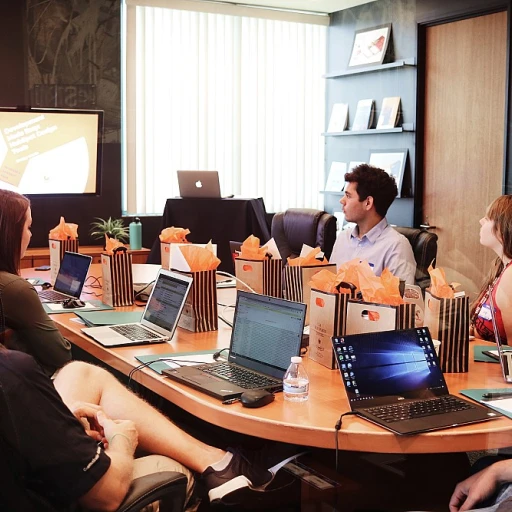
Understanding the Importance of Employee Monitoring
The Significance of Effective Employee Monitoring
In an increasingly digital work environment, understanding the importance of monitoring remote workers has never been more crucial. As companies in the Arabian Emirates expand their remote operations, they need to pay special attention to how employees manage sensitive data outside traditional office settings. This shift necessitates a robust system for tracking and ensuring data security. Monitoring software plays a critical role in this ecosystem. By utilizing advanced tools designed for remote work scenarios, businesses can track employee activity in real time, ensuring that company policies are adhered to diligently. These systems help employers monitor access to sensitive information, minimize the risk of data breaches, and foster accountability among remote employees. However, it’s not just about keeping tabs on what employees are doing. Effective employee monitoring can uncover inefficiencies that impact overall productivity, allowing management to make informed decisions that align with business objectives. Balancing privacy and monitoring becomes key here, as safeguarding employee privacy while protecting company data is a delicate act that needs addressing. Lastly, to truly leverage the benefits of remote employee monitoring, organizations must invest in training and awareness programs. These initiatives can guide employees working from different locations on best practices for data security and demonstrate how their contributions help in maintaining a secure work environment. For a detailed guide on enhancing remote work efficiency for office managers in the Arabian Emirates, consider exploring this insightful resource.Technological Solutions for Remote Employee Tracking
Embracing Technological Advancements
In today's rapidly changing digital landscape, companies in the Arabian Emirates are adopting advanced monitoring software solutions to ensure that remote workers adhere to company guidelines and protect sensitive data. These tools not only help in tracking employee activities but also play an integral role in data security, significantly reducing the risks of data breaches.
To keep pace with the evolving nature of remote work, businesses are now leveraging real-time insights provided by sophisticated monitoring tools. These solutions allow management to monitor the time spent on various tasks, thereby enhancing overall productivity and operational efficacy. When combined with effective data protection strategies, these technologies serve as a formidable line of defense against potential threats.
Utilizing Monitoring Tools
When implementing these technological solutions, it's essential to ensure that all devices used by remote employees are equipped with the necessary monitoring software. This proactive measure enables companies to have constant visibility over the access and sharing of critical data. Such capability is invaluable, especially when employees are working from various locations.
Furthermore, integrating these tools with existing security protocols ensures a seamless blend of tracking and protection, which ultimately results in heightened security maturity across the organization. For companies looking to enhance their monitoring setup, understanding the importance of strategic procurement and data management can be foundational. For more insights, companies may refer to strategic procurement and data management.
Implementing Data Leak Prevention Strategies
Advanced Data Leak Prevention in the Remote Work Landscape
Preventing data breaches is essential for safeguarding sensitive information within an organization, especially with the prevalence of remote working. Implementing robust data leak prevention strategies not only protects data but also enhances overall data security in the company. 1. Utilize Comprehensive Monitoring Software Monitoring software serves as a cornerstone for securing sensitive data, enabling real-time tracking of employees working from varied locations. These tools help in identifying unusual patterns or unauthorized access attempts, thereby mitigating security risks. Additionally, efficient employee monitoring provides the management with invaluable insights into productivity while ensuring compliance with established data protection policies. 2. Establish Rigid Access Control Policies To prevent unauthorized access to sensitive data, it's essential to establish strict access control mechanisms. This can be achieved by limiting access based on job roles, ensuring that only authorized employees have the necessary permissions to handle specific data. Implementing such policies helps in minimizing the chances of data loss or breaches. 3. Incorporate Data Encryption Protocols Implementing advanced encryption for data both in transit and at rest adds a significant layer of security. This ensures that even if data is intercepted or accessed by unauthorized entities, it remains unreadable and inaccessible. Encryption is especially vital when transmitting data across remote networks. 4. Engage with Security Teams and Tools Forming a dedicated team focused on data loss prevention can be critical in monitoring security threats and swiftly addressing potential vulnerabilities. Leveraging state-of-the-art security tools aids in proactive detection and response to any security risks. For an in-depth exploration and practical implementation strategies to enhance data security while optimizing your organizational function, consider visiting enhancing financial management with an outsourced controller. This resource provides valuable insights into maintaining financial integrity while reinforcing data protection principles in your office management practices.Balancing Privacy and Monitoring
Finding the Right Balance Between Privacy and Oversight
In the realm of remote work, the challenge of balancing employee privacy with effective monitoring is a critical concern for companies. While monitoring tools are essential for ensuring data security and managing remote employees, they must be implemented with a keen awareness of privacy issues.
First, it is vital to establish clear policies that outline the scope and purpose of monitoring. Employees should be informed about what data is collected, how it is used, and who has access to it. Transparency is key to building trust and ensuring compliance with data protection regulations.
Next, companies should consider using monitoring software that respects privacy while providing necessary oversight. This means opting for tools that focus on work-related activities without intruding into personal spaces. For instance, tracking software can be configured to monitor only during working hours and to exclude non-work-related applications.
Moreover, the management should engage in regular dialogues with employees to address any concerns about privacy. By fostering an open communication culture, companies can alleviate fears and ensure that monitoring is seen as a tool for support rather than surveillance.
Finally, it is essential to involve security teams in the development of monitoring strategies. Their expertise can help identify potential security risks and ensure that sensitive data remains protected without compromising employee privacy.
Balancing privacy and monitoring is not just about compliance; it is about creating a work environment where employees feel respected and valued, even when working remotely. By taking a thoughtful approach to monitoring, companies can enhance data security while maintaining a positive and productive remote working atmosphere.
Training and Awareness Programs
Building a Culture of Security and Awareness
Training and awareness programs are crucial in equipping employees with the knowledge and skills necessary to secure sensitive data during remote work. Companies must prioritize educating their staff about the potential risks of data breaches and the importance of following security protocols.- Interactive Training Sessions: Organize regular training sessions that are engaging and informative. These should cover the use of monitoring software, compliance with data protection laws, and best practices for maintaining data security. This helps ensure employees understand the company's policies and procedures.
- Use of Real-World Scenarios: Incorporate case studies and real-world examples to highlight the consequences of poor data management and security breaches. Interactive scenarios can demonstrate the potential risks and the measures that can prevent data loss.
- Regular Updates on Security Policies: Update all personnel regularly about changes in security policies and any new vulnerabilities in security remote work. Keeping employees informed ensures that they are equipped to handle the latest threats effectively.
- Fostering a Security-Minded Culture: Encourage a workplace culture where data protection and privacy are paramount. Reward teams and individuals who demonstrate a strong commitment to security practices, thereby reinforcing the importance of secure behavior in remote working environments.
- Accessible Support from IT and Security Teams: Ensure that employees have easy access to security teams for support and guidance. Open communication channels can help address potential security risks promptly and efficiently.
Case Studies from Arabian Emirates Companies
Success Stories from Arabian Emirates Companies
Real-world examples from companies in the Arabian Emirates can provide invaluable insights into the practical application of strategies discussed earlier. These organizations have harnessed the power of technology and management tactics to not only enhance the efficiency of remote work but also to secure sensitive data effectively.- Data Security Measures: Many companies have emphasized the importance of Implementing robust data security protocols. By employing comprehensive tools that monitor data access and handling, they have managed to mitigate potential security breaches. These firms have successfully used monitoring software to keep a real-time check on data flows, significantly reducing the risks of data loss.
- Balancing Privacy and Monitoring: Another standout approach has been the delicate balance between employee monitoring and privacy. Companies have crafted policies that ensure employees are aware of monitoring practices without infringing on their privacy rights. This balance has been crucial in maintaining trust while securing data.
- Training Programs: Training and awareness programs tailored to remote workers have proven effective. Through these programs, employees are educated about potential security risks and how to avoid them. Continuous education is key, ensuring that the workforce is up-to-date with the latest data protection policies and software tools.













